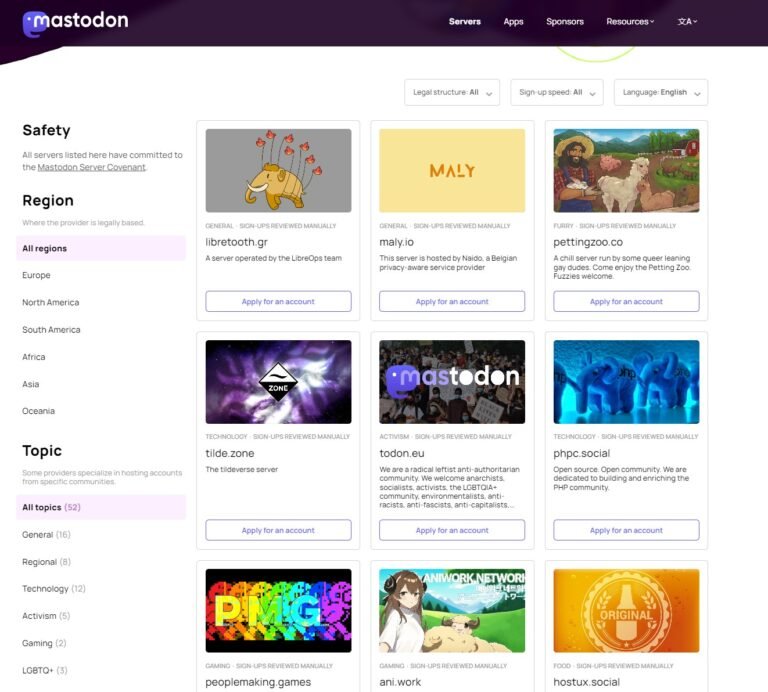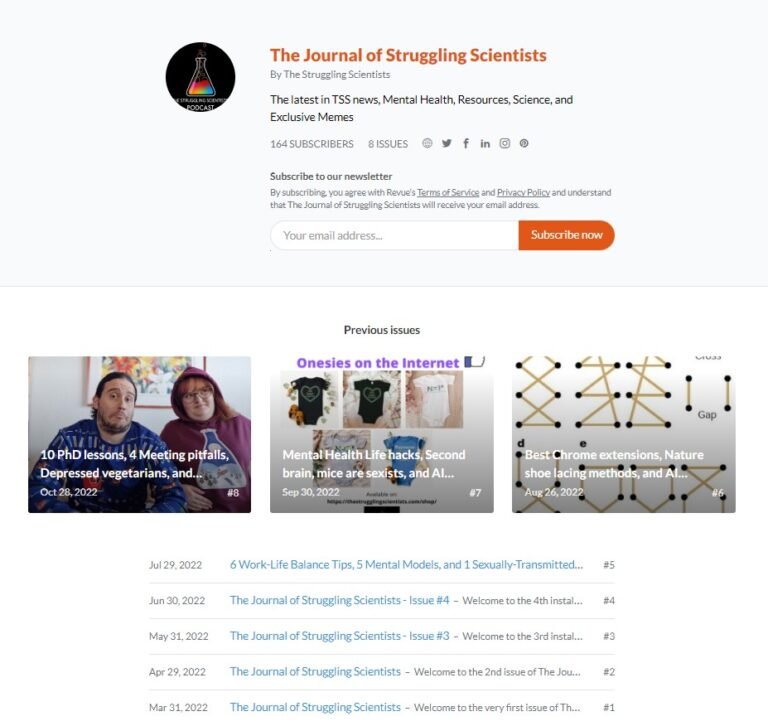Source: https://thestrugglingscientists.com/mastodon-for-academics/
The Complete Guide to Mastodon and Twitter for Academics

Why It's (Not) The Next Big Social Media Platform For Academics
Introduction
In this article, we will explore the differences between Mastodon and Twitter, as well as the benefits of using Mastodon for academics. We will also highlight some of the key differences between the two platforms. Additionally, we will provide some context on how exactly we arrived here at this moment that some people are referring to as #TwitterMigration and the role Elon Musk played in this.
FYI, I resisted my more primal urge to call this article “Tusk vs Musk” so your welcome XD.
Before the purchase of Twitter by Elon, it had been one of the largest and most well-known social media platforms in the world but struggled with finding a good balance between free speech and censorship. This had been most evident from one of its most problematic users in the last couple of years namely former POTUS Donald Trump.
Despite Elon’s initial willingness to buy up Twitter earlier this year, it would be several months of will he or won’t he, and several trips to the court before he would eventually acquire Twitter on October 27th for roughly 44 billion dollars.
In his first week as self-proclaimed “Chief Twit” he proceeded to fire top executives, laid off almost half of Twitter staff, acknowledged that advertisers were leaving the platform, and turn the blue verification ticker symbol (Twitter Blue) into a subscription service where previously it was free.
Great, now you are mostly caught up as per the writing of this article. Probably a lot more will have happened by the time you read this. So given all the turmoil that Elon’s acquisition of Twitter is causing it’s no wonder that so many people especially academics who were not fond of Elon, to begin with, are fleeing to other social media platforms.
One of the social media platforms profiting the most from this great academic exodus from Twitter is Mastodon. Mastodon is an open-source, decentralized social network. It is a free software that can be run by anyone.
Mastodon has been around since 2016, but it only recently gained traction with academics in 2022 due to the acquisition of Twitter by Elon Musk on October 27th. Many academics see Mastodon as a viable alternative to Twitter and have started switching over to it.
That being said many academics are still unsure what the future of Twitter looks like under Musk rule, the potential fragmentation of the #AcademicTwitter, and the complexities of learning and starting from scratch on a completely new social media platform that works differently from the previous one they had gotten used to.
What are the benefits of Mastodon over Twitter?
Mastodon is an open-source, decentralized social networking service. It is a federated network, meaning that, unlike Twitter and Facebook, Mastodon users can choose which server (“instance”) to use. Mastodon has several features that Twitter does not.
Open-Source And Decentralized
Because Mastodon is open-source it allows for it to be run by the community that uses it and allows for freedom and flexibility regarding the software. Unlike Twitter which is a centralized service now owned by Elon Musk, Mastodon is also decentralized and not owned by any one person.
While Twitter has many servers in use to function they are all run by Twitter and in so doing are at a greater cyber security risk than a platform like Mastodon which has decentralized servers all over the world. This makes it unlikely that any cyber security risk could completely dismantle Mastodon as it might Twitter.
Greater Character Limit
Depending on which server you are on your character limit will also be higher or much higher than that of Twitter. Thus far the character limits on Mastodon instances have ranged from 500 to 65535 characters which are phenomenally more than Twitter.
Such a high character limit effectively make things such as Twitter threads obsolete as you can post long-from content all in one post now. The benefit of doing it in one post over multiple posts is also that you can be certain that people will see the entire thing compared to threads where people check out after the first few and don’t make it to the end.
Federated Instances
Federated instances (servers) refer to interconnected servers that are predominantly used for publishing content on the web and hosting files, but despite being independent of one another they are still able to communicate with the other servers.
Federated instances allow people to choose which server/instance they would like to be in, interact with content from that instance, and other instances they are interested in but more importantly also block instances they do not wish to interact with. Each instance comes with its own set of rules which if you disagree with you can simply switch to another instance whose rules you do agree with and so provides a great degree of flexibility for users.
Third-Party Tools
In addition to the many Twitter-like features, Mastodon also has a rich pool of third-party applications created by the community to enhance the user experience of the app. Examples of these applications include the ability to import your contacts from Twitter to Mastodon if they are present on the platform.
Additionally, given that many academics are still in the process of migrating and are uncertain about the future of Twitter some Mastodon apps also facilitate cross-posting between platforms to allow you to communicate with your peers regardless of which platform they are on. Although it should be noted that many Mastodon admins are not in favor of cross-posting in general.
No Algorithm
In sharp contrast to Twitter, Mastodon does not have any algorithm to promote content to you that it considers may promote engagement. The most engaging content promoted on Twitter also tends to be very divisive things such as political subjects.
Instead, Mastodon provides a much more manual curation approach to its service where you can follow the content provided from your instance or check out the federated content from the different instances, as well as follow content from people you wish to follow. This approach by Mastodon aims to reduce engagement with content we disagree with or dislike in favor of content we agree with or like.
Free Verification
With so many trolls out there on the internet, it can be hard to prove you are whom you say you are. Previously Twitter combated this with its feature called Twitter Blue which was a free feature used by people with a big following. However since the acquisition by Elon Musk, Twitter Blue will now become a paid-for feature costing ~$8 a month for anyone who wished to verify their identity.
Despite being hailed as one of the dumbest business moves in recorded history by everyone to charge users for a feature that was previously free, the verification feature is still something many people would like.
Mastodon in contrast to Twitter, allows you to verify your account for free.
Zero Ads
Twitter is a for-profit business whose primary source of revenue thus far has been ads. Because of this, you end up seeing a plethora of ads as you scroll through your Twitter feed. Mastodon, on the other hand, is a non-profit that believes that “instant global communications were too crucial for modern society to belong to a single commercial company”.
In stark contrast to Twitter, you will not find any ads present in your Mastodon feed that will ruin your experience of the service. All the instances of Mastodon are run by dedicated admins who run it for free or may accept donations from the community to keep it running.
What are the drawbacks of Mastodon over Twitter?
Despite the seemingly widespread adoption of Mastodon by academics, it does come with its fair share of drawbacks compared to Twitter. These include but are not limited to:
Limited Server/Instance Options Available Right Now
Despite boasting several thousand instances (5784 according to Mastodon.help) at the time of writing this you will not have access to the overwhelming majority of them. Most instances are full and are currently not taking in additional accounts while the remaining 52 you have available to you are either focused on a niche topic or may turn you down if you apply for an account (see image below).
So if you were hoping to get started with Mastodon ASAP in an
academic/science-focused instance then you have very few options.
While
by itself not a huge problem as you can interact with accounts from
other instances it will, however, be awkward if I as a non-furry
enthusiast decide to start my account with the one instance that is
geared towards furry enthusiasts.

Choosing A Server/Instance
In contrast to any social media platform I have ever used, Mastodon requires users to pick an instance to be able to start on the platform.
While deciding between over 5500 instances seems daunting the decision gets a bit more complex because as previously stated you most likely won’t have access to all those instances. So instead of trying to pick the best academic/science-focused instance available you are stuck there trying to pick the least bad option among the 52.
Or I should say 12 instances that fall under technology. I ended up on Qoto because quite frankly, the options were slim. Again, while not the end of the world, starting your Mastodon journey like this does sully your first impression of the platform.
Confusing Systems And Terminology
Let’s not sugarcoat this, the systems and terminology used in Mastodon can be confusing. Federated networks, instances, toots, favourite, and boosts are some of the terms you will get acquainted with should you decide to start on Mastodon. I watched the youtube video below to make sense of it all when I started.
Now, while it may be a bit more complicated than Twitter you
will eventually get the hang of it. That being said the innate confusion
does detract from the platform and probably will detract from people’s
first impression of using it.
It also doesn’t help that in addition
to the terms being different from Twitter the exact way in which things
function also differs.
If you are used to clicking the like button on Twitter to promote a funny or interesting tweet then you will need to change that mindset in Mastodon. In Mastodon, liking or favouriting something doesn’t help the post get more exposure but only lets the poster know you liked it. To help posts receive more exposure you will need to boost them.
Not the end of the world but it’s something many new
Mastodon users who migrated from Twitter recently may not yet be aware
of it.
Fewer Unique Features
Shocker but it turns out that the newer platform Mastodon has fewer unique albeit niche built-in features than the incumbent Twitter. I should also stress that the features I’m going to mention are niche use cases, especially for academics but if you were genuinely interested in them then it is a shame Mastodon doesn’t provide them.
As someone who posts consistently on Twitter, scheduling posts was something indispensable for me as it allowed me to make sure I provided the quality content I wished to provide consistently. It also reduced the actual amount of time I needed to spend on Twitter and helped me keep a healthy relationship with social media despite posting a lot.
Another feature that most people wouldn’t think about that Twitter excelled at was its native Newsletter service (Revue) which was completely free. Granted it may not have been the best emailing service in the world but it was free to use compared to platforms like MailerLite, Mailchimp, and Convertkit which cost $30 to $100 a month to use depending on your amount of subscribers.
In many ways, the features that Mastodon has are variations of Twitter’s, and the truly unique feature namely the plethora of instances currently comes across as more of a letdown than a feature. At least IMO.
Admins, Arbitrary Rules, And Privacy
Instances are run by admins. If you are lucky you will find yourself in an instance with a great admin or at the very least one that you don’t have a problem with. As admins, they get to make the rules regarding what is and what isn’t allowed on their instance sort of like Elon Musk but without the billions of dollars.
If you disagree with the rules of the admin and instance you are free to go to another instance which fits you better. This all sounds great in theory however in practice, especially with only 52 instances available to choose from can be a problem.
If you got to pick between all 5700+ instances you would realistically find the perfect one for you. The reality is though with only 52 to choose from you probably are going to end up in one that might be a bit awkward or slightly off from what you were hoping for.
Additionally, if privacy was one of your major gripes with Twitter it doesn’t improve by much with Mastodon. The main difference is that instead of developers accessing your private DM’s it’s now just one person who can but they say don’t want to. Also now instead of a company like Twitter getting hacked with your account being one in millions only your admins needs to get hacked with your account info hiding in a sea of a few thousand other accounts.
Novelty Bias
Many academics have praised Mastodon for feeling more “intimate” and that they’ve enjoyed the platform more than they did Twitter. However, how much of that is due to being in the honeymoon phase with a new social media platform?
Right now so many academics are making Mastodon accounts and posting #Introduction with many people replying and reaching out trying to build new connections on this new platform. This won’t be the case forever and it begs the question of what will Mastodon be like once the dust settles and the novelty has worn off.
Conclusion & Suggestions for Academics Considering a Switch to Mastodon
With everyone’s least-liked Billionaire scrambling to get his
return on investment in Twitter, the platform’s future remains uncertain
at best.
In the meantime, Mastodon is blowing up with a new wave of
academics migrating away from Twitter or hedging their bets in case
Elon sinks the ship.
In this article, I’ve tried to list some of the pros and cons of Mastodon as best I can. By no means is it the perfect social media platform for academics but it certainly has many things going for it.
Will it replace Twitter as the academic platform of choice? Will it simply be an alternative to Twitter in the long run? Or will Elon simply force everyone to leave Twitter with his poor decisions?
While we currently don’t have all the answers to make the best possible decision I would simply suggest anyone who currently has a Twitter account to not delete it just yet. Mastodon is still in the early stages of being adopted by the newcomers and while initial reviews are positive we shouldn’t make a hasty decision if we don’t have to.
This is why the best suggestion I can provide right now is to
get your feet wet with Mastodon while not deleting your Twitter account.
If indeed Twitter sinks then at least you will have already
gotten started rebuilding on Mastodon and if Twitter doesn’t completely
go under you will have both accounts up and running.
With that said everyone I hope you found this article useful. If you’d like to read more from us you can also check out our blog on the best chrome extensions for PhD students or reasons you need to get a second brain.



No comments:
Post a Comment